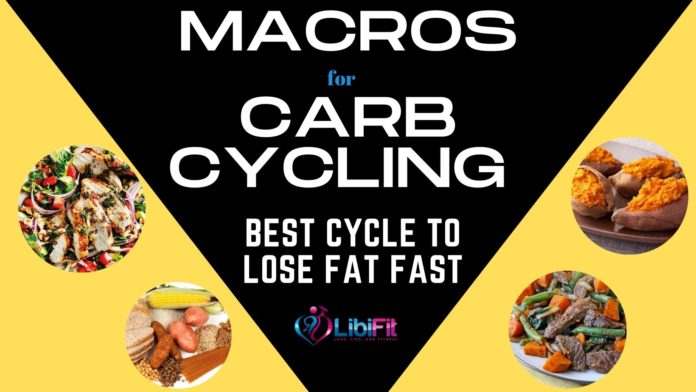Contrary to popular belief, carbs aren’t bad. You just need to make sure you eating the right carbs in the right amounts. Understanding macros and more so macros for carb cycling is the key to sustained weight loss. Timing and limiting carbs to build muscle and loss weight is tricky. One must understand how properly consume carbs to achieve this balance. Carb cycling and proper macros for carb cycling can lead to the body of your dreams.
To achieve the best results from carb cycling, you must understand the diet plan. Having a thorough understanding and the science involved in it, and the instructions to follow it in the right way.
This article will help you grasp the basic concept of carb cycling. It will also provide an easy-to-follow schedule of and identify the optimal macros for carb cycling.
What is Carb Cycling?
Carb cycling is a strict diet plan used by individuals who wish to lose weight while improving their muscle mass. It is particularly popular among athletes and bodybuilders. They often aim to store more carbs in their bodies for marathons and long-haul exercises. However, for us ladies, this method has been proven to work as well. This is because most women are carb sensitive. That basically means, carbs makes us blow up!
This dieting approach basically revolves around altering your daily intake of carbs. On a daily basis, you move back and forth between low-carb days and high-carb days. Sometimes, you even have a no-carb day as well where the amount of carbs to consume is minimized to zero. While those days are not fun (they actually suck), they work wonders for fat loss and keeping your metabolism burning like an engine.
Typically, the high-carb days are timed with the exercise days because this is when your body needs more fuel. On such days, most women should consume around 1 to 1.5 grams of carbs per pound of their body weight. This amount of carbs will fulfill the increased energy requirements. Men should probably consume 2 to 2.5 grams on these days. Low-carb days include eating less-sugary foods and low-starch vegetables and fruits to bring down the daily carb consumption.
To successfully alter between these days, understanding the proper macros for carb cycling is important. We will discuss this in later sections of this article.
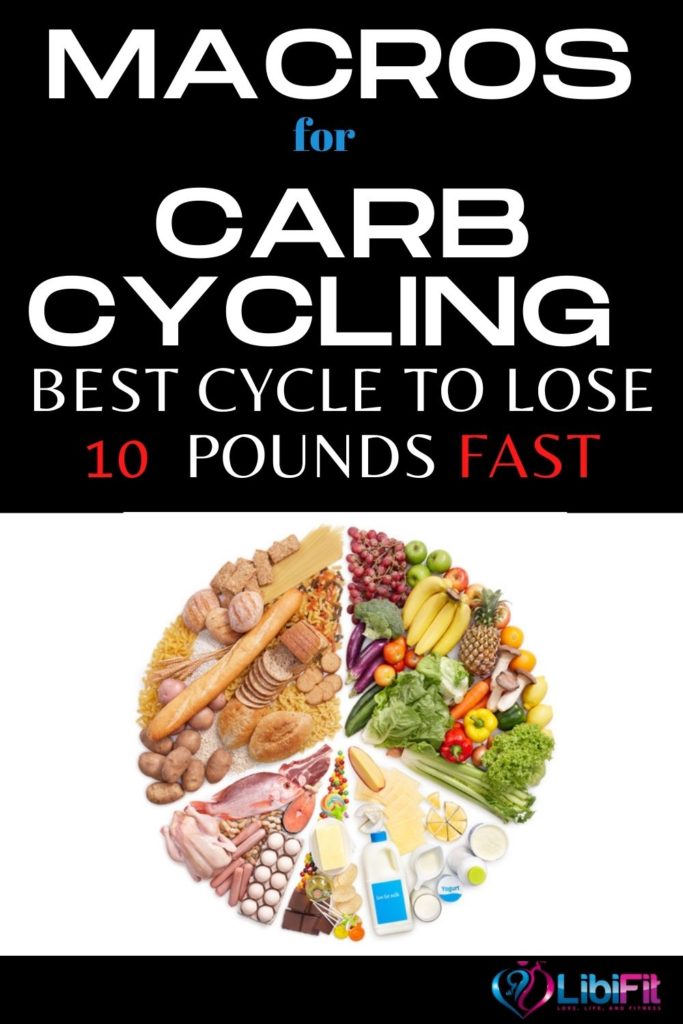
Why Does the Carb Cycling Diet Work (How it Burns Fat)
The science behind carb cycling primarily relies on the benefits that can be achieved via carbohydrate manipulation. The basic goal of this diet approach is to allow the body to utilize fat as fuel instead of carbohydrate (glycogen). Carbs are the primary source of energy under normal circumstances. Timing the right kind of exercise with the right macros for carb cycling can slowly deplete the glycogen storage in the body. This will ultimately force the body to burn fat for fuel.
Including high-carb days in between low-carb days in a strategic manner also helps improve the balance and functions of several appetite-regulating hormones. Mainly ghrelin and leptin. [1] [2] This further supplements the weight loss processes inside the body.
Another mechanism through which carb cycling is thought to induce fat loss is insulin regulation. When you eat foods rich in carbs, your blood sugar levels spike up. This forces your pancreas to release insulin, a hormone that helps transfer blood glucose into the cells. Once inside, these sugar molecules are either broken down to release energy or stored in the form of fat for later use.
When you eat a meal loaded with carbs, the body ends up releasing too much insulin. This quickly acts to reduce the elevated sugar levels by shifting them into the cells. There they are converted into fat and stored as adipose tissue. It is important to control your carb intake. Carb cycling is a great way to accomplish this is to keep an eye on your carb intake. Understanding the proper macros for carb cycling can help you perform the diet to lose the most weight. Carb cycling gives the body a chance to burn the incoming sugar molecules instead of storing them as fat.
What are Macronutrients?
Macronutrients, also known as macros, refer to three key components i.e. proteins, fat, and carbohydrates. They make up the composition of every meal you have and play an important role in energy creation. You will find them listed on the nutrition label of most food items in every grocery store.
Gram for gram, these macronutrients are chiefly responsible for the calorie count in every meal you consume. Let’s look at the three basic macronutrients briefly.
Carbohydrates
When thinking about macros for carb cycling, carbohydrates are by far the most important. Carbohydrates include different varieties of fiber, starches, and sugars.
Once inside, these carbs break down into glucose or blood sugar molecules that are later used by the body to derive energy. Some of these molecules are converted into glycogen and stored in the liver and muscles for later use.
One gram of carbohydrate roughly provides 4 calories of energy. Is considered to be the most common macronutrient in most food items you consume.
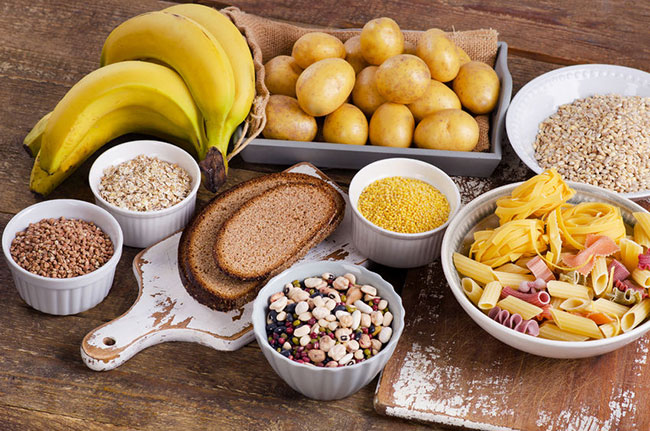
Fats
The richest source of energy among all macronutrients are fats. Fats contain 9 grams of calories per gram. This particular type of macronutrient accounts for 20 to 35 percent of the total calories per meal; however, the exact amount may vary depending on the type of diet being followed.
Fat is required for several critical functions of the body, including nutrient absorption, hormone secretion, and maintenance of body temperature. [4]
Protein
Just like carbs, one gram of protein provides 4 calories to the body. This particular macronutrient is vital for immune function, hormone synthesis, and cell signaling among many other functions. Experts recommend deriving 10 to 35 percent of your daily calorie intake from high-quality protein sources. [5] However, these recommendations may vary according to individual health, age, goals, and body composition. If you are looking to build muscle, you’ll need a bit more.
Protein is the building block of muscles. One of the beautiful things about protein is that it helps to reduce hunger levels. Studies have shown that proteins is more filling than any of the other macronutrients. Protein not only builds muscles, but it is good for bones. Many of us ladies, as we progress in age, are at risk for osteoporosis. Ensuring we eat enough protein will help decrease the chances of this disease developing. Also, women typically do not have enough protein in their diets. This is why it is important to use protein supplementation. These supplements will help to ensure you are consuming enough protein.
Macros for Carb Cycling
Now that you have learned about macros, let’s discuss macros for carb cycling…mainly carbs. Carbs are the most important macro to monitor when carb cycling. Controlling the number of carbs you eat to reduce body fat requires careful attention. The main point is just to pay attention and calculate the grams of carbs you consume daily. You need to also keep track of fat and protein as well. We will discuss approaches for those macros as well. However, as indicated, carbohydrates are one of the main macros for carb cycling that you need to control.
Below is a sample 7-day schedule indicating the approximate grams of carbs to include in your diet per day. Note that the entire week has been divided into three categories – high, medium, and low. This is based on the grams of carbs consumed that day.
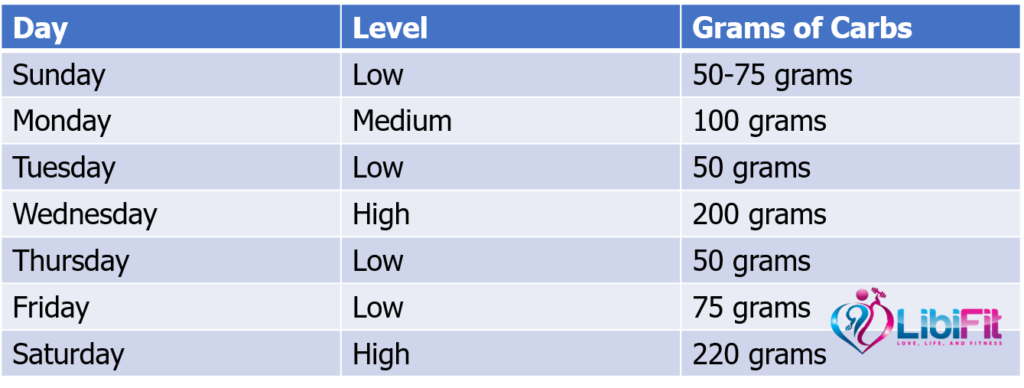
Focusing on daily carb intake is the main concern. However, the macros for carb cyling diets include perscriptions for protein and fat as well. Generally, here are a couple of rules of thumb:
- Consume at least 0.8 grams – 1 gram of protein per body weight. Below are a few calculations for protein consumption. See table below. More lean healthy protein is always better. I shoot for 1 gram or more per body weight.
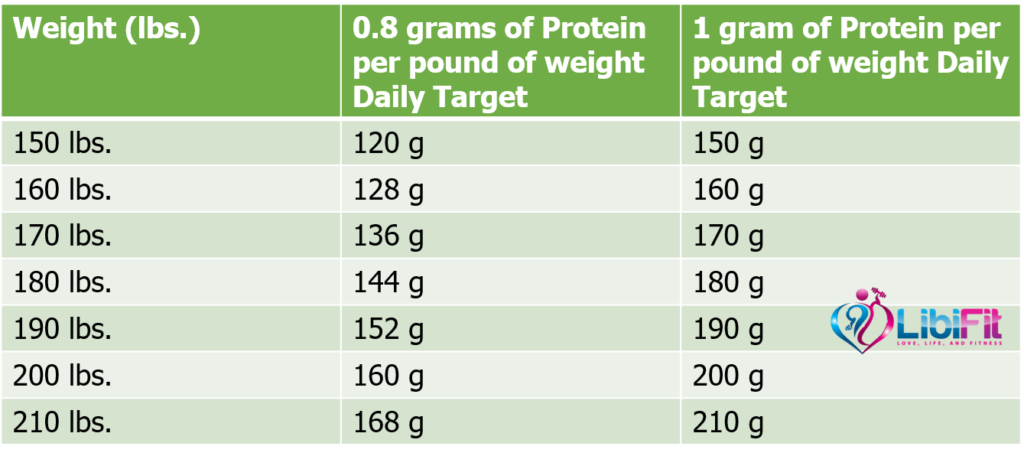
- Keep fats in the range of 30 – 50 grams. More fat is consumed on lower carb days.
Keeping fat consumption low, especially on high carb days is very important. Too much fat consumption along with carbs on high carb days will result in weight gain.
Foods to Eat on a Carb Cycling Diet
To keep a proper track of your macros for carb cycling, it is important to know which foods you can eat and which ones to avoid.
On high-carb days, make sure to consume healthy carbs only. Go for foods like oatmeal, brown rice, quinoa, whole-wheat bread, and healthy fruits and vegetables. These starches contain complex carbohydrates and are rich in fiber. On low-carb days; however, avoid starchy veggies and fruits and focus more on low-carbohydrate alternatives like eggplant, peppers, avocados, broccoli, and tomatoes.
As far as your protein intake is concerned, consider eating chicken, turkey, eggs, fish, legumes, turkey, soy, or lean beef. You can also take protein supplements in the form of protein shakes.
Lastly, don’t forget to supplement your body with healthy fats in the form of olive oil, avocado, nuts, seeds, fatty fish, etc.
Foods to Avoid on a Carb Cycling Diet
So you can go ahead and pretty much cancel any white, processed, or fried food. Here is a short list of foods you should avoid. There are others, they are just not on this list.
- White bread
- Sugary drinks
- Ice cream and frozen desserts
- White rice
- Junk food, like burgers and fries
- White flour
- Processed meats like sausages
- Packaged snack foods
- Heavily fried food
Burn More Fat with Carb Refeeds
As you busily count macros for carb cycling, you may want to consider periodic carb refeeds to propel your weight loss. These refeeds refer to days when you intentionally over-consume calories after remaining in a calorie deficit due to diet control and exercise. [6] The primary intention of having such days is to counteract the negative effects of the calorie deficit which may include lethargy, altered hormones, and increased hunger which may potentially push you into hitting a weight loss plateau.
These refeeds refer to days when you intentionally over-consume calories after remaining in a calorie deficit due to diet control and exercise. [6] The primary intention of having such days is to counteract the negative effects of the calorie deficit which may include lethargy, altered hormones, and increased hunger which may potentially push you into hitting a weight loss plateau.
Limiting your macros during carb cycling normally pushes you into a calorie deficit which decreases the levels of a hormone called leptin. Decreased levels of this hormone signal the brain that you are in a state of calorie crisis. The body responds to this by increasing hunger and burning fewer calories, which only hinders weight loss. [7]
By introducing carb refeeds every now and then, you can control your leptin levels and maintain the fat-burning processes in the body. This approach is particularly useful to add in a typical endomorph carb cycling diet as such individuals usually find it more difficult to lose weight and hit a weight loss plateau.
Alternating the daily carb intake to induce fat loss has emerged as a unique weight loss strategy in the fitness world. By carefully counting the daily macros for carb cycling, it is now possible to push your body into a fat-burning mode to help lose weight without compromising on muscle mass and energy levels. Supplementing this potential weight loss strategy with frequent carb refeeds and timely exercise is highly recommended for faster, more efficient, and long-term results.





































